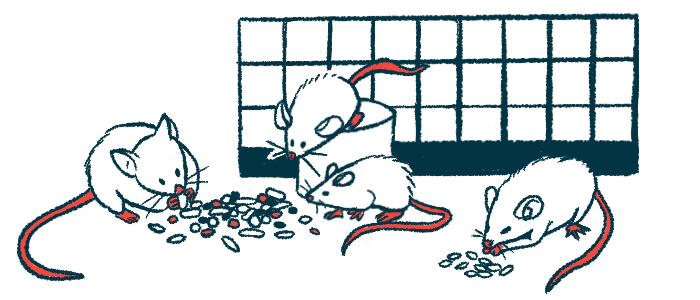Bumetanide diuretic found to ease Angelman symptoms in mice
Drug for swelling blocks NKCC1 protein also found in the human brain

The diuretic bumetanide helped to improve cognition and lengthen the time to a seizure in a mouse model of Angelman syndrome, according to a new study from Japan.
Bumetanide worked by blocking NKCC1, a protein that regulates the flow of chloride and other electrolytes in the body, all key in maintaining a proper balance of body fluids.
That protein was found to be dysregulated in the hippocampus — a region in the brain that’s key for learning — in these mice.
If these findings can translate into humans, then “the blockage of NKCC1 may be a potential therapeutic strategy for patients with Angelman syndrome,” the researchers wrote.
The study, “Imbalanced expression of cation-chloride cotransporters as a potential therapeutic target in an Angelman syndrome mouse model,” was published in the journal Scientific Reports.
Treatment with diuretic bumetanide seen to improve cognition in mice
Angelman syndrome occurs when a gene called UBE3A is missing or doesn’t work properly. When this happens, the brain won’t develop as it should, causing problems with cognitive function and seizures.
As part of their efforts to find ways to manage some of the symptoms of Angelman syndrome, the research team focused on NKCC1 and KCC2. These two proteins transport electrolytes — minerals with an electrical charge — into and out of cells.
NKCC1 helps transport chloride into cells and is most abundant in nerve cells, or neurons, until right after birth. Its levels then gradually decrease during development. KCC2, conversely, is most abundant in mature neurons, and helps transport chloride out of cells.
To know how these proteins behave in Angelman syndrome, the researchers compared mice lacking a properly working Ube3a gene (the mouse form of UBE3A) with their healthy (wild-type) littermates.
The level of NKCC1 in the hippocampus brain region was 14% higher in UBE3A mice than in wild-type mice. That of KCC2 was 18% lower. However, the level of chloride in neurons did not differ significantly, which according to the scientists may mean that NKCC1 was increased in cells other than neurons.
The researchers then tested whether bumetanide, a diuretic medication that’s usually used to treat swelling from heart, kidney, or liver disease, could ease the symptoms of Angelman syndrome in the mouse model.
Bumetanide was given for 21-28 days (up to one month) to adult mice. An osmotic pump, a miniature infusion system, was used to release the medication at a controlled rate over time.
“It is difficult to maintain effective bumetanide concentrations in the brain when the drug is administered only once or twice a day due to the rapid drug elimination and low brain penetration in rodents,” the researchers wrote, noting the pumps were used “to allow the continuous delivery of bumetanide.”
In a novel object recognition test, the Angelman syndrome mouse model had more difficulty identifying an object not explored previously compared with wild-type mice. Treatment with bumetanide, however, helped the mice with Angelman-like disease identify the novel object.
“These results indicate that chronic administration of bumetanide effectively improved cognitive dysfunction,” the researchers wrote.
UBE3A mice spent less time running in a rotating rod (rotarod) than their wild-type littermates, a reflection of impaired motor coordination, but treatment with bumetanide did not help UBE3A mice stay longer in the rotarod. It also didn’t help them travel a greater distance in an open field test.
The time to develop a seizure triggered by inhalation of a chemical called flurothyl was shorter for Angelman mice than for their wild-type littermates. Treatment with bumetanide lengthened the time to a flurothyl-triggered seizure.
These findings suggest that blocking NKCC1 activity may be a potential therapeutic strategy for improving cognitive dysfunction and epilepsy.
The researchers say their study suggests that imbalances in NKCC1 and KCC2 may contribute to the symptoms of Angelman syndrome — and that blocking NKCC1 with bumetanide should be further investigated.
“These findings suggest that blocking NKCC1 activity may be a potential therapeutic strategy for improving cognitive dysfunction and epilepsy,” the researchers concluded. However, they noted that, “due to compliance and adverse effects, our results are difficult to translate into clinical applications directly.”







